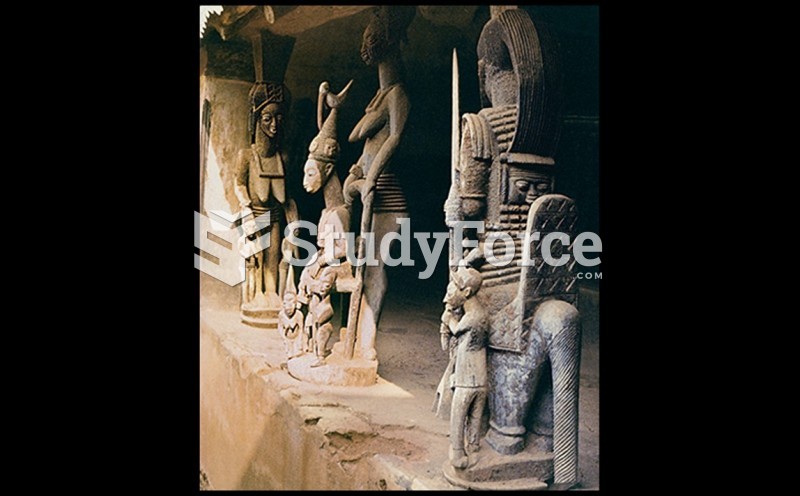Answer to Question 1
Louis XIV was determined to become the sole authority of France and its legacy. To distinguish his unrivaled authority, he took as his official insignia the image of the Classical sun god Apollo and referred to himself as le roi soleil (the Sun King). Louis's desire for fame and glory led him to spend resources indiscriminately to create symbols of majesty, such as his palace at Versailles. More than a royal residence, Versailles wasin its size and splendorthe symbol of Louis' supremacy over the landed aristocracy, the provincial governments, the urban councils, and the Estates General.
The plan of Versailles, laid out by the French architect Louis Le Vau, reveals esteem for the rules of symmetry, clarity, and geometric regularity. These principles, in combination with a taste for spatial grandeur, dramatic contrast, and theatrical display, were the distinguishing features of the Classical baroque style. The grounds of Versailles featured sparkling fountains, artificial lakes, grottoes, a zoo, theaters, and outdoor rooms for private gatherings and clandestine meetings. If the exterior of Versailles symbolized royal grandeur, the interior publicized princely self-indulgence. Decorations included such luxury items as crafted silver, clocks, lace, brocades, porcelain, and fine glass. Versailles' salons were adorned with illusionistic frescoes, gilded stucco moldings, crystal chandeliers, and huge, ornate mirrors.
In its total effect, the palace is dignified and commanding, a synthesis of Classical and Palladian elements. Its calm nobility provides a striking contrast to the robust theatricality of most Italian baroque structures.
Answer to Question 2
At the end of the nineteenth century, artists became inspired and influenced by the arts of other cultures. Japanese woodblock prints entered Europe along with Asian trade goods in the late nineteenth century. Produced in great numbers between 1660 and 1860, and sold as popular souvenirs, the prints feature flat, unmodulated colors, undulating lines, and compositions that are cropped or contain large areas of empty space. Their daring use of negative spaceand startling perspective was often the consequence of unusual vantage points, such as the bird's-eye view. Japanese landscape prints, such as those by Katsushika Hokusai, featured bold contrasts and decorative arrangements of abstract shapes and colors, aesthetics that would come to greatly influence the art of Van Gogh and Gauguin. Japanese prints also had an immediate impact on fine and commercial art, including the art of the lithographic poster, such as those by Henri de Toulouse-Lautrec.
The fierce woodcarvings of Oceania were embellished with elaborate patterns of spirals and scrolls, designs that also appeared in Oceanic tattoo culture. The serpentine patterns of Oceania tattoos and woodcarvings appear in the paintings of Paul and in the many prints and sculptures that he produced during his stay in Tahiti.
The 1889 World's Fair, held in Paris, contributed to the European infatuation with non-Western culture which brought to public view the arts of Asia, Africa, and Oceania. At the event the composer Debussy was deeply influenced by the music of Bali in Indonesia. He experimented with nontraditional kinds of harmony, such as the five-tone scale found in East Asian music.
Answer to Question 3
C







